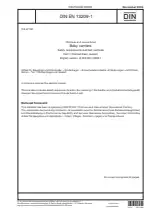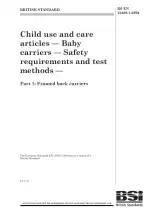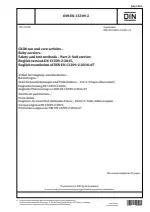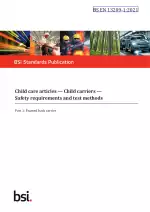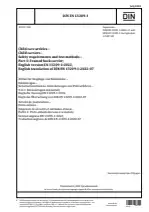Child use and care articles - Child carriers - Safety requirements and test methods - Part 1: Framed back carriers
Also Known As:
The standard makes sure that safety is considered during the design and production of these infant carriers. It involves a variety of characteristics, including the carrier's stability and structure as well as the materials' tensile strength and longevity. The child's weight and use-related strains should be supported by the carrier.
Features like adjustable straps and fastenings to firmly hold the child in position, preventing them from falling out or slipping, are additional safety needs. To ensure the child's comfort and wellbeing while using the carrier, the carrier should also offer sufficient support for the child's neck and back.
Various test procedures are described to ensure compliance with the standard. These tests evaluate the carrier's stability, strength, and resilience to impact and stress, among other properties. The standard also specifies standards for the labeling and user manual that must be provided with the carrier.
| Descriptors | Babies, Baby carriers, Baby equipment, Carrier bags, Carry cots, CE marking, Children, Consumer information, Definitions, Design, Dimensions, Fitness for purpose, Infants, Instructions for use, Load factor, Marking, Materials, Pack frames, Packages, Properties, Safety, Safety engineering, Safety requirements, Specification (approval), Stress, Testing |
| ICS Codes | 97.190 - Equipment for children |
| Language(s) | English |
| File Size | 1.7 MB |

